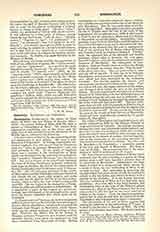

Gonnelieu, JEROME DE, theologian, ascetical writer, and preacher, b. at Soissons, September 8, 1640; d. at Paris, February 28, 1715. At the age of seventeen he entered the Society of Jesus (October 4, 1657). Till the year 1674, when he pronounced his final vows, his services were requisitioned in various capacities, his work as a teacher being particularly efficient and valuable. From this date his abilities were long and actively directed towards the ministry of the pulpit, and many, attracted by the piety and learning of his discourse, looked to him as spiritual consoler and adviser. He attained to considerable repute as a sacred orator, the qualifications which he possessed in this way being altogether exceptional and peculiar; he had, particularly, in a marked degree, the faculty of conveying spiritual thoughts of the loftiest and noblest import in a form that was readily assimilable by the people. His duties, of whatever order, were discharged with thoroughness and a laudable spirit of self-sacrifice; the zeal and earnestness which he always displayed in the cause of religion entitle Gonnelieu to a very high place among the evangelical workers of that time who labored most to promote the spiritual advancement of men. Towards the latter end of his life he gave himself up almost exclusively to literary activity; and the renown which he acquired in this department was no less deserved than the celebrity with which his preaching was attended. The following is a list of his works: “Exercise de la vie spirituelle” (Paris, 1701); “De la Presence de Dieu qui renferme tons les principes de la vie interieure” (Paris, 1703, 1709; Marseilles, 1827); “Methode de bien prier” (Paris, 1710, 1769); “Pratique de la vie interieure”, etc. (Paris, 1710); “Instruction sur la Confession et la Communion” (Paris, 1710; printed with preceding work in Paris edition of 1713); “Sermon de Notre Seigneur a ses apotres apres la Cene, avee des reflexions” (Paris, 1712); “Nouvelle retraite de huit fours a l’usage des personnes du monde et du cloitre” (Paris, 1736).
To the above almost all the bibliographies add another work, of which the full title is “L’Imitation de Jesus-Christ, Traduction nouvelle: Avec une Pratique, et une Priere a la fin de chaque Chapitre” (Par le R. P. de Gonnelieu, de la Compagnie de Jesus, Paris and Nancy, 1712); but the great majority of the bibliographies, too, if apparently somewhat arbitrarily, deny that the Traduction (translation), as distinct from the secours (helps) at the end of each chapter, is by de Gonnelieu. The opinion of the negative critics seems to be based mainly on the statement of Calmet (op. cit. below) that “the translation is by Jean-Baptiste Cusson [printer at Nancy], and the rest by P. Gonnelieu” The most approved form of this theory is that which attributes the rendering, as made originally, to Jean Cusson, printer at Paris and clerk to the parliament, who, in his version published in 1673, had availed himself largely of the celebrated translation by Sacy. Jean-Baptiste Cusson, a man of culture and fine literary sense, after thoroughly revising and improving his father’s work, had issued the amended version at Nancy in 1712. Gence, author of a notice on the principal French translations of the “Imitation” (Journal des cures, September, 1810), substantially maintained this view; so, also, Barbier and Brunet (op. cit. below). The “Journal des Scavans” (August, 1713), on the other hand, in a review written within one year after the publication of the work, whilst praising the zeal and piety of the translator, says expressly that the version is by P. Gonnelieu; and adds that “Sieur Cusson (one time printer to the Journal) has enriched this first edition by many copper-plates”. The trestimony of the “Memoires de Trevoux” (see below) for August, 1713, is almost identical with the preceding; and in the same notice it is stated that “the name of P. de Gonnelieu was a ‚Äòprejuge infaillible’ in favor of the excellence of the work”. Finally, if it be argued, with those who deny the Gonnelieu authorship of the rendering, that the title of the “Traduction” is misleading, is it not more natural to assume that the
Abbot of Senones, in his “Histoire des hommes illustres”, written almost fifty years after the appearance of the version, was deceived by the ambiguity, than to assert such error on the part of those who were on terms of intimate relationship with Cusson, the printer, and Gonnelieu, the presumptive author?
P. J. MACAULEY

